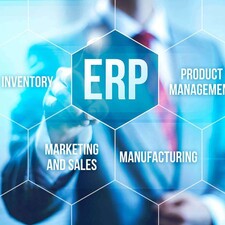Blog
What does Apple’s technology solution have to do with ERP?
In the 1990’s, ERP purchasers were wary of solutions offering their own database. There were concerns about importing and exporting data to third party systems, data integrity and security. Consequently, there was a rush to have ERP software integrate with a multitude of off the shelf database solutions: MS SQL, Oracle, Sybase, Informix, etc.
Later, many of these databases disappeared from the market. Others were moved off the “supported database” list as ERP vendors began to realize the costs of updating and supporting multiple databases, and instead decided to focus on just one or two solutions. Further, the more disparate components you add to the ‘core’ ERP functionality, the higher the risk for breaks in the overall system functionality. Concerns about data availability have also become irrelevant as standard import/export tools like XML, COM and ActiveX become standard and widely availability.
More and more providers are going back to their roots, when they supported only their own internally developed database solution. Interestingly these database solutions are often called “proprietary”, when in fact, all off the shelf database solutions, except those that are truly open source, are equally proprietary.
Learn how to select the right system in the
Guide to Selecting an ERP System in 7 Easy Steps

Now, what does this have to do with Apple? Well, from the beginning Apple blazed their own path, designing, developing and manufacturing their own operating system, applications and hardware. This was a very different strategy than Microsoft, who focused exclusively on OS first, and then built an application business, notably their productivity solutions in the MS Office Suite.
Apple’s strategy was based on a belief that owning the technology stack would allow them to control their destiny. By designing solutions that they were certain were compatible across the OS, application, and hardware layers, they were able to ensure the quality of any product with their brand on it. The Apple success was built not just on one layer in the technology stack, but on everything that comprises the user experience, from the feel of the iPhone, to the design of the icons on the screens of complimentary Apple devices. And, consequently, the Apple upgrade path is easy and, primarily, seamless.
Now we can see other technology giants understanding the value of owning the technology stack and adopting the Apple model. The new Microsoft tablet, the Surface, is their total hardware, software, and operating system solution. We also see that Microsoft SQL Server is the only database software that Microsoft Dynamics AX will run on. This past summer, Google announced that it would acquire Motorola Mobility Holdings, the cellphone business that was split from Motorola in their move to owning the technology stack.
So what is the Apple lesson? ERP vendors are moving from acquiring and consolidating packages, to a strategy of owning, the entire technology stack, either through organic development or acquisition of different technologies. This is the path to innovation in the years ahead.
An important part of selecting an ERP system is writing a good ERP RFP.
Download our How-To Guide for Writing an ERP RFP: ;

abas understands that the most important factor in selecting an ERP system is the total flexibility. With abas, that starts with owning the technology stack, including the embedded database. This allows customers to develop and incorporate virtually any unique business requirement into the system without being locked into a single version.


